Encebollado de pescado – Ecuadorian fish soup with lime pickled onions
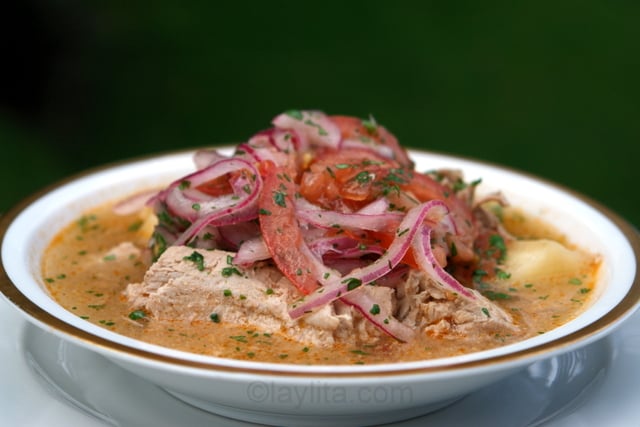
Encebollado de pescado is one of my favorite soups, the name is hard to translate, and literally it could be translated as oniony fish soup. Encebollado is made with fresh tuna, yuca or cassava root, tomatoes, onions, cilantro, spices and is served with curtido or pickled onions and tomatoes on top or mixed in with the soup. The pickled or lime marinated red onions are what give it the name “encebollado”. It is a typical soup from the coastal region in Ecuador.
This Ecuadorian tuna fish soup is very versatile and can be served for lunch, dinner and even breakfast or brunch. In fact it is known as the best hangover cure (like so many other Ecuadorian dishes); and restaurants that specialize in encebollado begin serving it in the early morning.
{Encebollado de pescado} Ecuadorian tuna fish soup
Ingredients
- 2 lbs fresh tuna albacore or similar
- 1 lb yuca or cassava fresh or frozen
- 2 tbs sunflower oil
- 2 tomatoes diced
- ½ red onion diced
- 1 teaspoon chili powder
- 2 teaspoons ground cumin
- 8 cups of water
- 5 cilantro sprigs
- Salt to taste
Instructions
- Heat the oil on medium heat to make a refrito with diced onion, tomato, cumin, chili powder and salt.
- Add the water and cilantro springs, bring to a boil.
- Add the tuna and cook for until the tuna is fully cooked, about 15 minutes.
- Drain the tuna and keep the broth to cook the yuca.
- Separate or break the tuna into small to medium size pieces.
- Bring the tuna broth to a boil and add the yucas, cook until tender but firm, about 30-40 minutes for the frozen yuca.
- Take the yuca from the broth, remove the strings and cut into bite size chunks.
- Add the yuca chunks and tuna pieces to the broth, taste and add salt if needed.
- Re-warm the soup if necessary and serve topped with a good amount of pickled onion and tomato salsa, if desired can also be served with chifles or plantain chips, tostado corn nuts, avocado slices and extra lime slices.
Notes
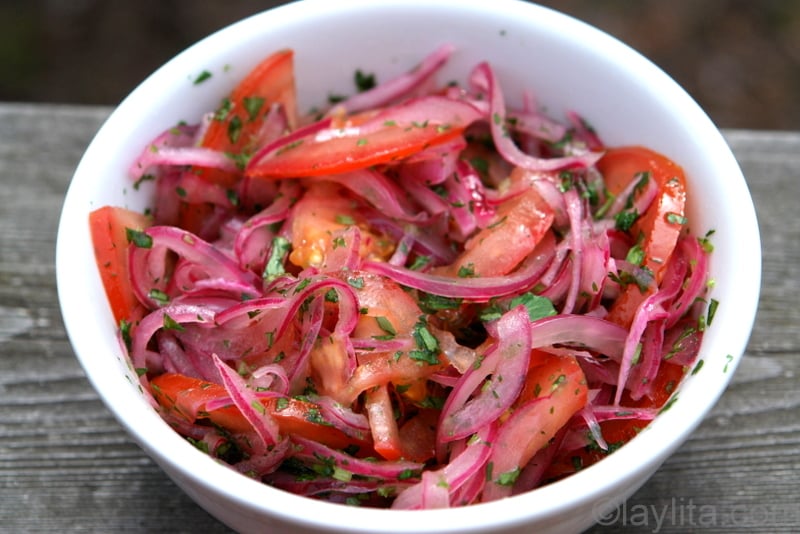
Yuca or cassava root is widely used in South America. It is difficult to find good quality fresh yuca in the most parts of the US. I was able to get some decent yucas at the Fiesta store when we lived in Austin. The problem here is that when you buy the roots you don’t really know if the yuca inside is going to be good. While shopping at Fiesta one day I learned that the best way was to break the ends of the yuca roots off and check the yuca before buying it (the yuca should be completely white, any signs of brown lines or spots or dryness in the inside indicate that it isn’t good). However, while you could get away with this at Fiesta where they had huge amounts of yuca and everyone did this. I don’t think this could be done at places like Whole Foods that have a small section of 10 yuca roots.
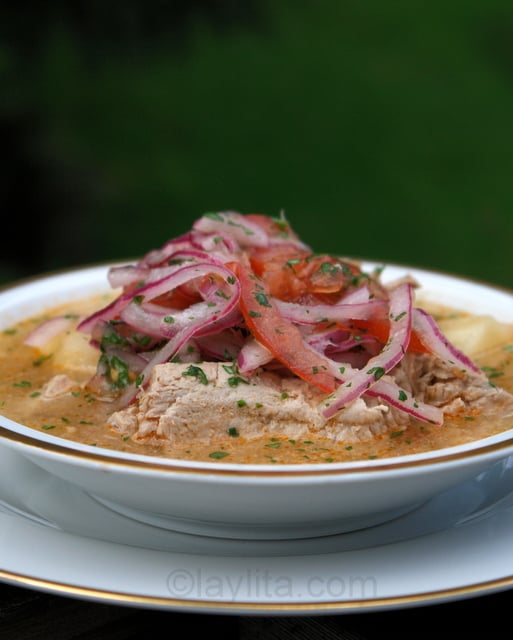
The solution is that now you can also buy it frozen from specialty Latin grocers or even online, which guarantees a minimum level of quality. However, anyone who tastes real fresh yuca in South America will tell you there is a significant difference.
If you are lucky enough to get fresh yuca it is important to peel it very well. There is a thin layer, almost pinkish, between the brown exterior and the white interior, that is toxic (no need to worry I have never heard of anyone getting sick from yuca) and should be removed.
Yuca is usually prepared by boiling it, just like potatoes. It is cooked once it is soft but still slightly firm inside. The middle part of the yuca roots have string like membranes that should be removed either before cooking or after (sometimes it is easier to remove them after they are cooked). In Ecuador there are different cooking times for yuca roots that are completely ripe and yucas that are younger.
I’m guessing that most of the roots found in the US are probably completely if not overly ripe. In Ecuador, we use yucas in a variety of soups, served plain with salt as a side dish or with sauces on top. They can also be fried, grated, and even made into flour and starch for baking. I’ve also had them in dessert recipes, but that isn’t as common as having them in savory dishes.
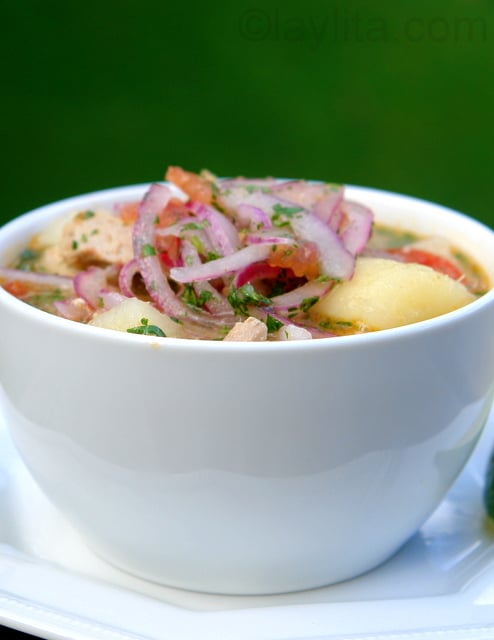
I prepared the encebollado with frozen yuca this time, but have a picture of the fresh yuca from a previous time I made this soup. Also, like most South American and Ecuadorian dishes the recipe varies from one city to another and even from one household to another. I had the soup before with additional vegetables such as potatoes and corn, but the essential ingredients are the tuna, yuca and the pickled onions on the top.
Preparation photos for encebollado fish soup:
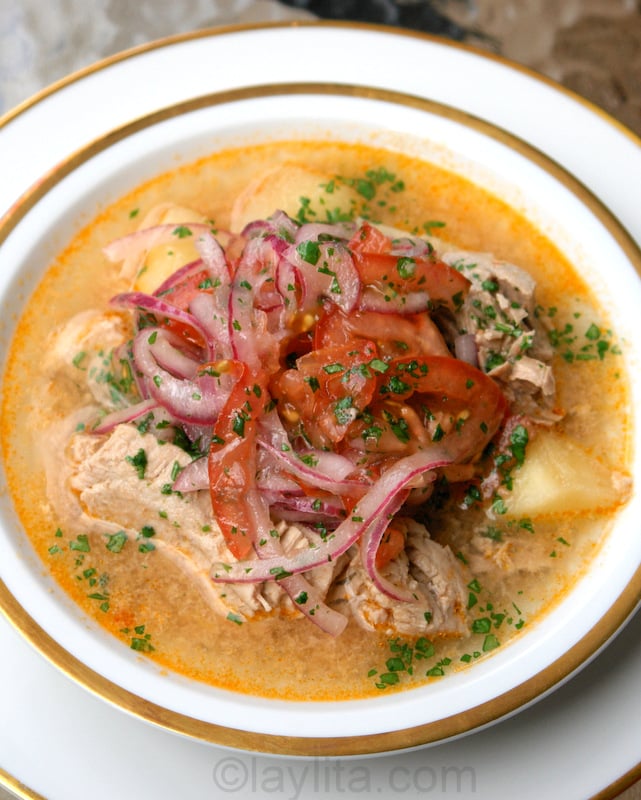

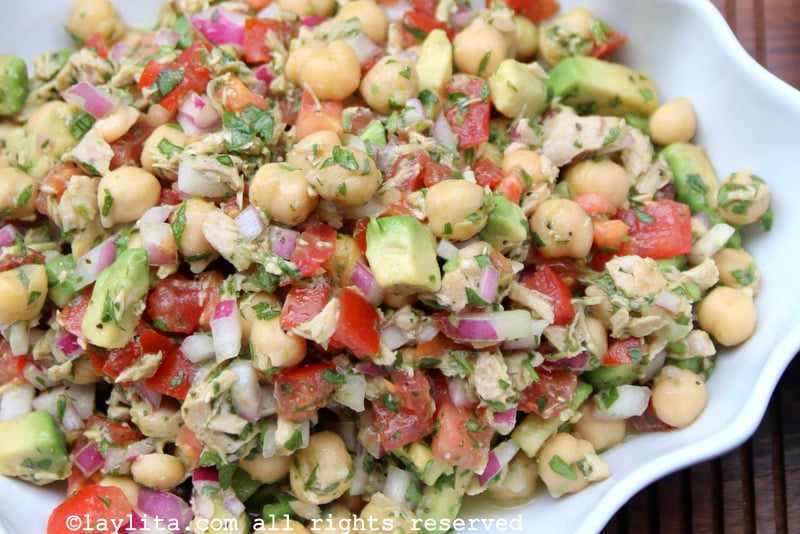
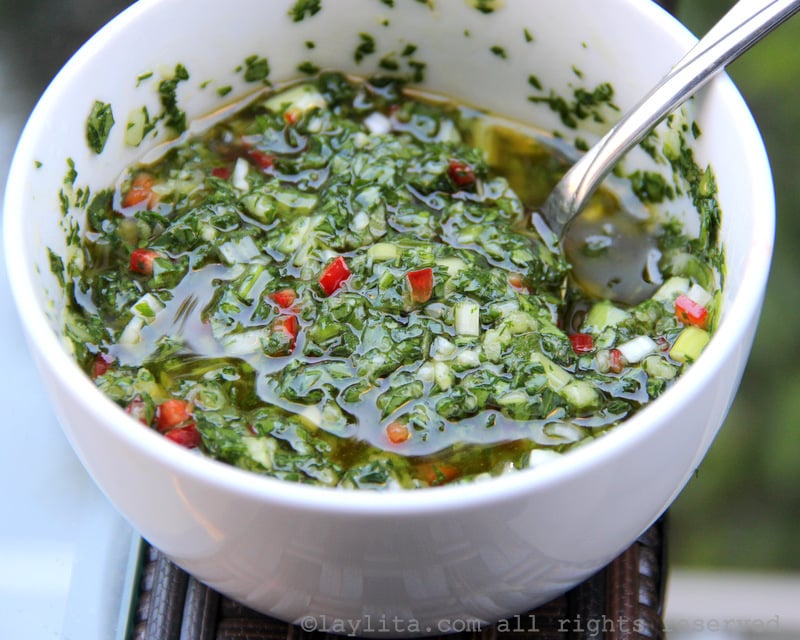
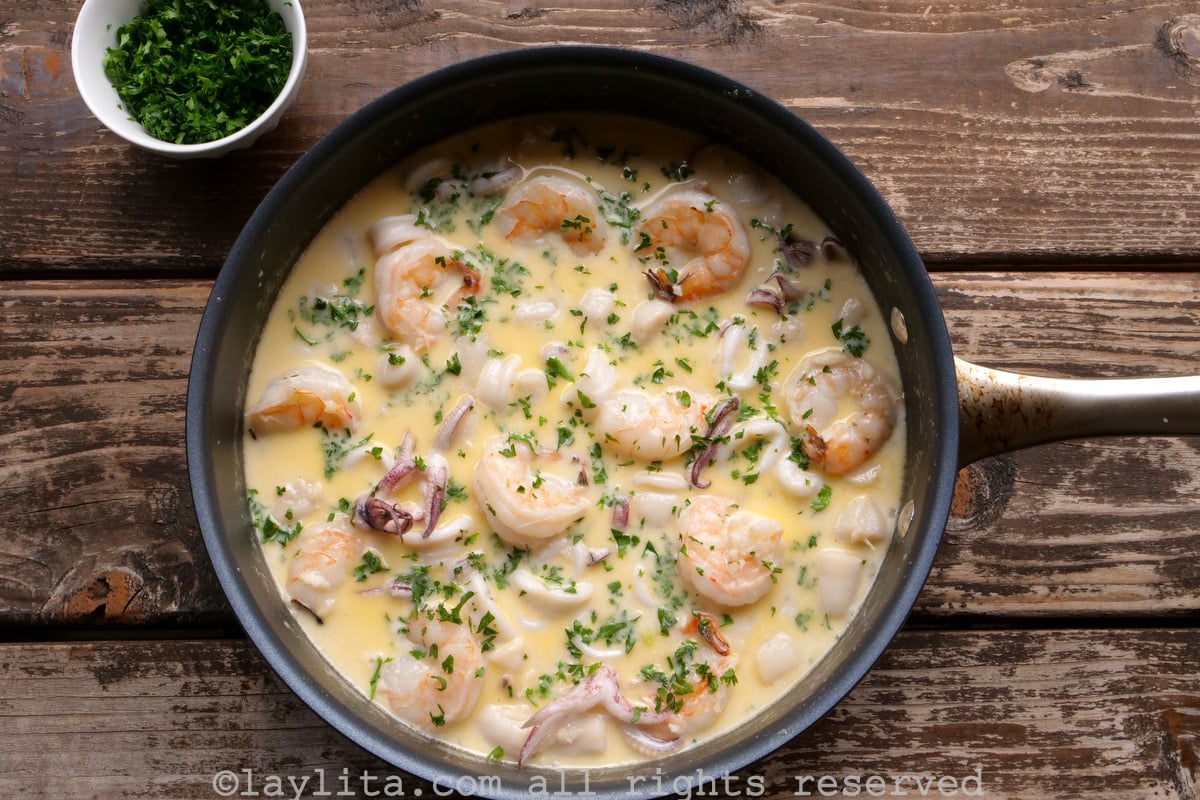
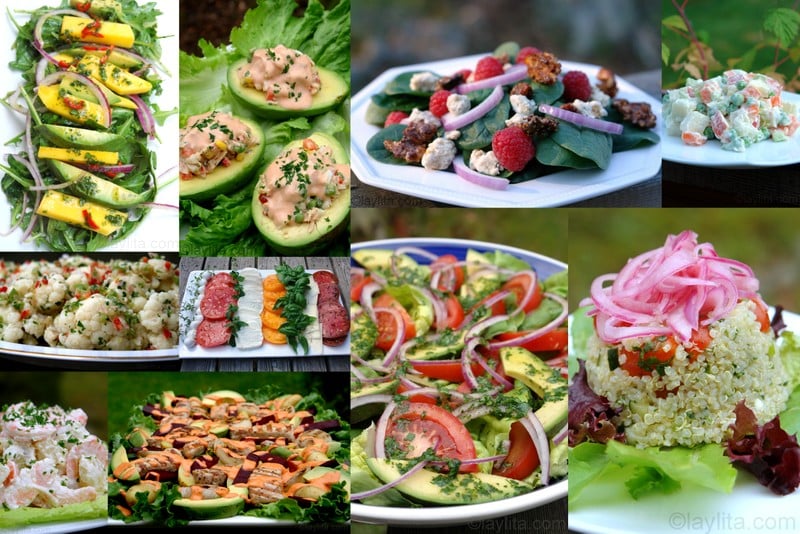
Yum! I am living in Ecuador right now, and while I haven’t eaten this recipe outside the house much, it is so good, especially on a chilly day like today. I only had canned tuna, but I think it turned out okay. I will work to get my hands on fresh fish at the Feria Libre the next time I make this. So simple and will become a staple in our house.
Just made this and was immediately transported from my frosty Canadian city to a humid street corner in Guayaquil. Took me a while to find good quality yuca, but worth it in the end. It tasted just like the real thing, I wish I had made it ages ago. One of my favourite breakfasts.
Your blog is wonderful, thanks so much!
Hola Laylita!
I made the encebollado for my husbands birthday as a surprise and he loved it! He was very impressed! Reminded him of Ecuador. Thank you for the recipe! :-D
Annette Naranjo
Looking forward to making sopa de bolla next!
:-D
When we travel to Guayaquil, our first stop is to pick up a huge bowl of Encebollado. It is made almost identically as this recipe with the only “addition” not being to the soup itself, but being served with a big basket of hot, fresh, flaky bread or chifles!!! (Don’t forget the limes!!!) They are what would be classified as the “cherry on top!” My mamita is going to be so impressed when I offer to make her this soup instead of waking everyone up extra early to travel to the vendor on the calle.
Hi Alicia – Yes, love the chifles with encebollado. Maiz tostado is also a great topping.
I made this soup today for me and my husband. It was amazing, the best part was that we didn’t need to wake up early in the morning to beat the hung over croud at the Picanteria! Thank you very much!
Laylita: I’m so grateful for your blog! I lived in Ecuador in high school, and I miss comida ecuadoriana so much! In my opinion, it’s the best (and nutritious) food! I love encebollado; my parents used to take us to the same shop on Saturday for brunch. I will be giving it a try this weekend. I’m super excited to try this :-) thank you so much for sharing.
I was so excited to find this recipe. I am Ecuadorian and my (HUGE) family is from Ecuador. They’re from Santa Rosa. The closest cities to them would be Machala, Cuenca, or Loja. What’s funny is my family makes encebollado all the time, but ours is a salad. We use red onions, cucumber, tomato, radishes, cilantro, lime, and salt and serve it over rice or with plantain chips.
It’s so funny how one small little country can have so many variations of the same kinds of foods.
I’m so glad I found your blog, and look forward to reading more recipes.
Can i use tuna from a can?
Fresh is always best, you can also use other types of fresh fish. However, if you are really craving encebollado with tuna and only have tuna in a can then you can use it.
wow! as with another person who wrote, i found your blog while searching for a recipe for encebollado. wow! i am very glad to have found your blog and look forward to reading more posts.
lisa/jama/manabi/ecuador
Love this recipe and this site! I studied in Ecuador for a semester and this soup was one of my favorites! After a night out, a bowl of encebollado and a pack of chifles from the street vendor was just the right thing to get yourself ready for the day. I´ve made this recipe once before and it´s the next best thing from eating it on the coast of Ecuador. Thanks for putting it up here!